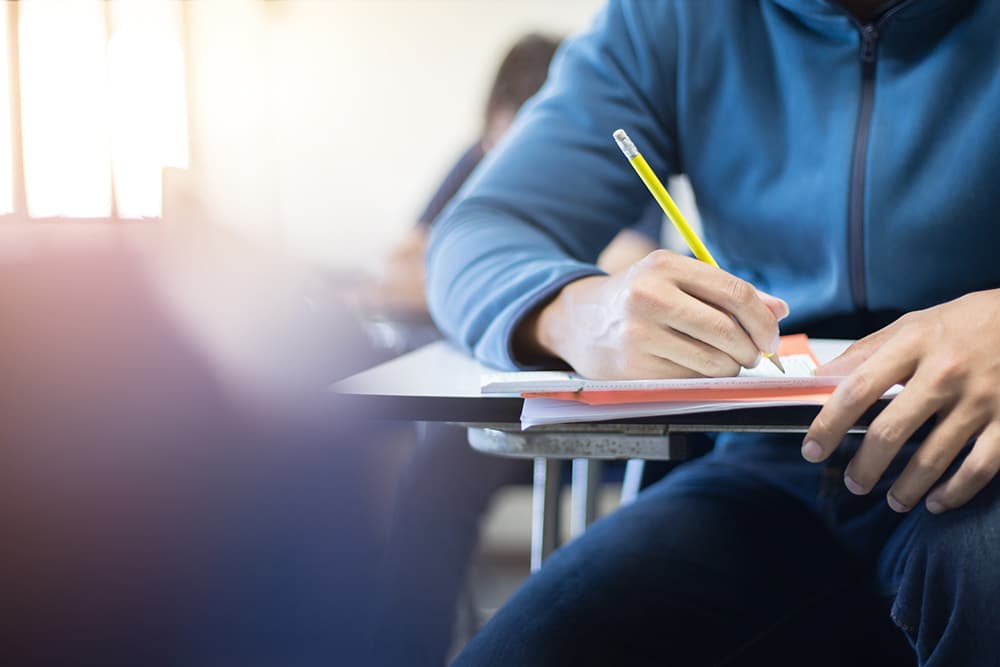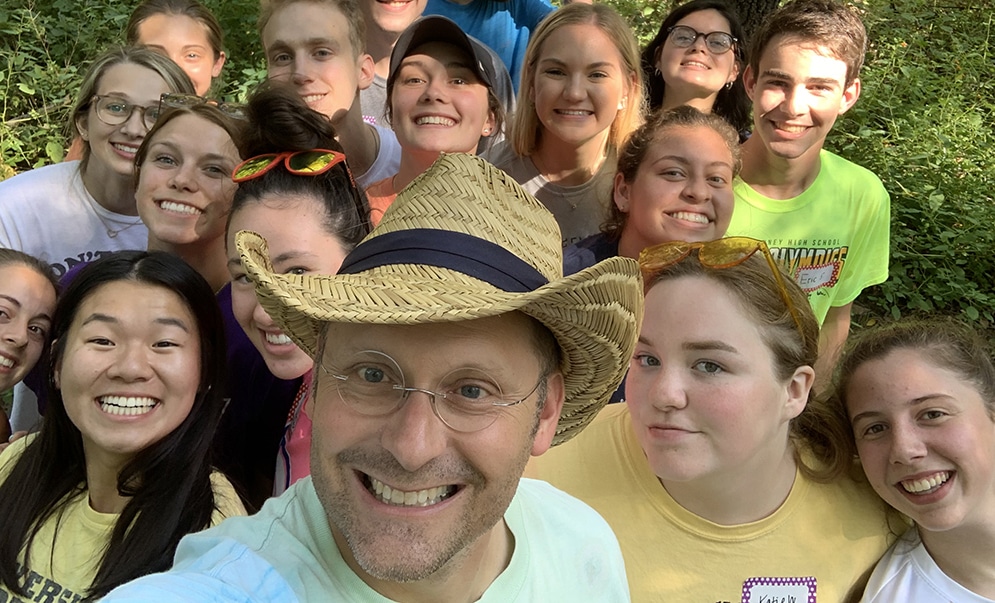Since COVID-19 continues to be a concern, addressing student fears, anxieties and realities is an important concern for college administrations. The possibility of getting sick is only a part of what concerns students amid a host of other consequences from the pandemic.
The strength of the Catholic mission to live in union with God and to trust in his providence while accepting the cross has become especially relevant during this time. Colleges are leaning on their leadership and campus ministries to help put this into a faith perspective while also emphasizing mental health services for student well-being. An increase in staff training and supporting the social aspects of college life are two other ways that administrators are working to avoid anxiety and isolation that can lead to depression.
Tim Collins, president of Walsh University in Canton, Ohio, believes that simply bringing students back on campus will resolve the tensions that came from school online. For students with healthy families, that adjustment was manageable, but that is not the situation for all students, including many at Walsh. Collins went so far as to personally lobby the governor so that they would be able to open residence halls this fall.
Read other stories in our special college section here.
“Our students have wanted to come back, so we have a need to convince the adults that this is in their best interest,” he said. “The 18-24 age group is in a different situation than the rest of the population. When we sent the students away in March, for many, it took away their entire support systems. Nearly 40% of our students are Pell Grant eligible, 16-18% represent minorities, and many are the first generation in their families to go to college.” Among minorities on campus, he noted those from single parent homes were dramatically more compared to the white students.
Collins pointed out that many sectors of the American population are at higher risk for suicide and noted that there were two suicides at the Air Force Academy right after strict restrictions were enacted in the dorms last spring. At Walsh, Collins said he is working with faculty and staff to prevent conditions that could lead to isolation and depression, such as being alert to students and reaching out whenever there is a concern.
The university has two counseling centers; one for students on campus and a clinic in the local community where Walsh graduate students in counseling can do their practicums. Although many students are reluctant to get counseling, according to Collins, they are not slow to reach out to express themselves amid the 350 faculty and staff.
“We call it the Walsh experience,” Collins said. “It’s a personal place. We know these people.”
Part of that experience includes the CARE team, developed in 1991 to intervene with at-risk students through a team of staff members from every level including campus ministry, counseling, faculty, sports, registration and financial aid to help solve student problems.
“Every piece comes together then we sort it out,” Collins said. “Then, even if we solve that problem, we keep the student on our radar.” Other programs at Walsh that can provide an additional safety net for students facing increased financial stress during the pandemic include Cavs Closet (Short for Cavaliers, their sports mascot), which provides clothing for job interviews and internships, and their food bank, an out-of-the-way area helping commuters unable to afford meals.
At Walsh, Collins said they are working against social distancing on campus, preferring instead to call it physical separation.
“We want a physical distance with a personal connection,” he explained. “We don’t want to give in to fear of interacting with human beings; that is not God’s plan and not how we are wired.” Although students will be asked to wear masks, he said that social activities are planned and encouraged for the fall.
Strategies to reduce anxiety

Maria Iniguez, a mental health therapist for John Paul the Great Catholic University in Escondido, California, pointed out that many of their students, regardless of economic status, are experiencing increased or new anxiety and worry, social isolation, depression and personal instability. Job loss for them or family members is also causing hardship.
Local restrictions do not allow students to meet on campus at this time, but since fall classes do not resume until Sept. 28, the hope is that classroom learning will be possible by then. Regardless, students have the option of one-hour weekly counseling sessions, which can be online when meeting in person is not possible.
“These sessions provide an emotionally safe environment that normalizes their experiences and concerns, and offers a structured cathartic experience and prayer as deemed helpful,” Iniguez explained.
Some of the strategies particularly relevant at this time is having students focus on matters within their control and recognizing the impermanence of the pandemic.
“This approach provides students with an opportunity to learn adaptation skills they can also use later in life, including in their careers,” Iniguez noted. Working through vulnerabilities and developing new skills and learning how to manage stress is often a part of that according to her. In situations where isolation is enforced, “students are encouraged to use their creativity to find new ways of establishing social connections, such as virtual dates, game nights, etc., with friends and family,” she said. “And I help them to understand how solitude or isolation can help facilitate a closer relationship with their family and with God.”
The key, Iniguez said, is making sure students continue to feel connected and supported. “We will also provide professional learning for staff about the signs and symptoms of trauma in students, including changes in behavior.”
New issues
Greg Wood is a licensed therapist with a private practice who has also served students two days a week for 19 years at Thomas Aquinas college in Santa Paula, California. A second therapist, a female, has been hired for this year. Due to the unusual circumstances of the pandemic, counseling services were extended into the summer through telehealth services online.
“A lot has happened that affected all of us that has created a lot of new issues,” Wood said. He noted that sometimes, financial problems, family dysfunction such as substance abuse and ailing family members, are realities for students trying to get through school. Depression and suicidal ideations for whatever reason sometimes surfaces but only among a handful of students, Wood said. It is always treated very seriously.
For those who struggled with being back at home, Wood encouraged them to recognize that it was only a short-term situation. Given that their on-campus summer program went well, he is optimistic for the fall term. The hope, Wood said, is that distance learning will not be necessary again, but regardless he encourages students to focus on the fact that stressors related to the pandemic are only temporary. He also explained that counseling services integrate faith into this scenario, which is important to their students.
Overall, Wood said that the college will get back into their usual routine while encouraging students to reach out whenever they need help coping. “The pandemic may have caused some unique problems,” he said. “but it’s not unique in how human beings react to stress. There are tools to apply to those situations that can help make it easier.”
Patti Maguire Armstrong writes from North Dakota.







